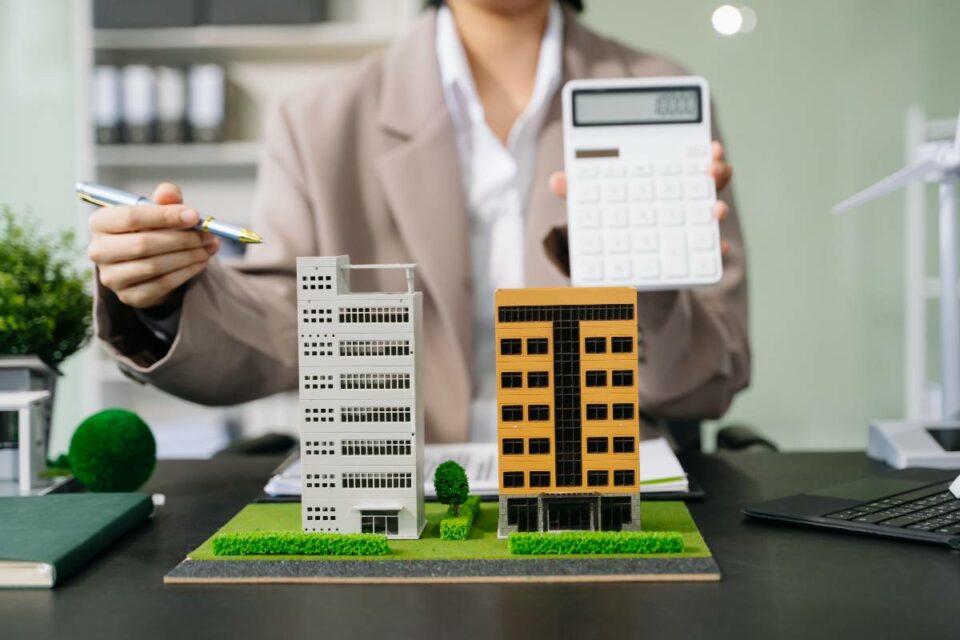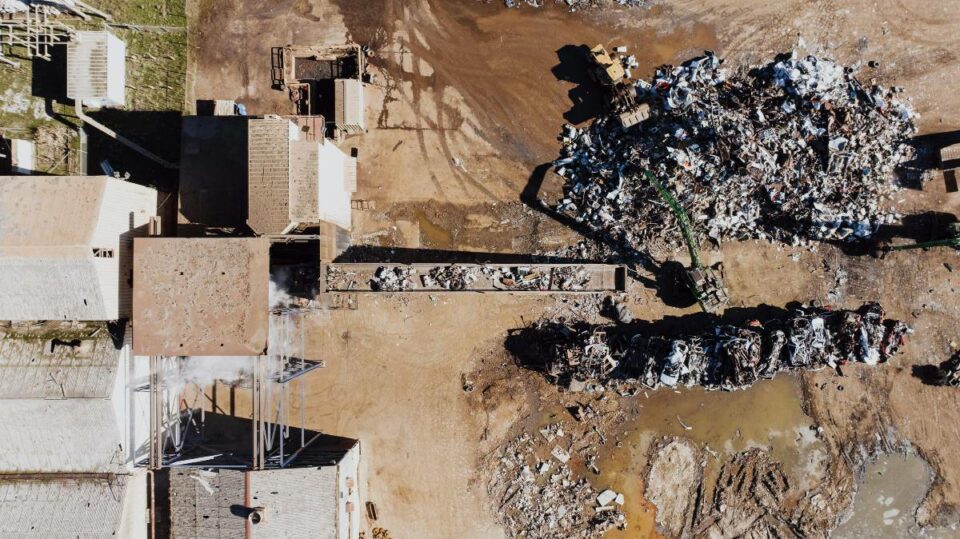There has been a lot of talk lately about climate change and its potential implications on commercial real estate. This is an important discussion we need to have, as commercial buildings both generate significant emissions and are vulnerable to the effects of a changing climate. With that in mind, it’s crucial for businesses—and everyone else—to understand not only how global warming might affect their operations but also what steps they can take now to help protect themselves from future impacts. In this blog post, we’ll explore the various ways that climate change may present risks and opportunities in commercial real estate so you can make informed decisions going forward.
Commercial real estate contributes to the exacerbation of climate change through the release of emissions resulting from its construction, maintenance, and operations. Moreover, the sector itself faces risks from climate change, including rising sea levels, natural disasters, and extreme weather events.
Key Takeaways
- As climate change accelerates, commercial properties need to incorporate resilience and sustainability measures to protect value and functionality.
- Property owners must stay abreast of environmental regulations, which can directly affect property values and usage rights.
- Despite the challenges, climate change opens up opportunities for innovation, sustainable building practices, and investments in green properties.
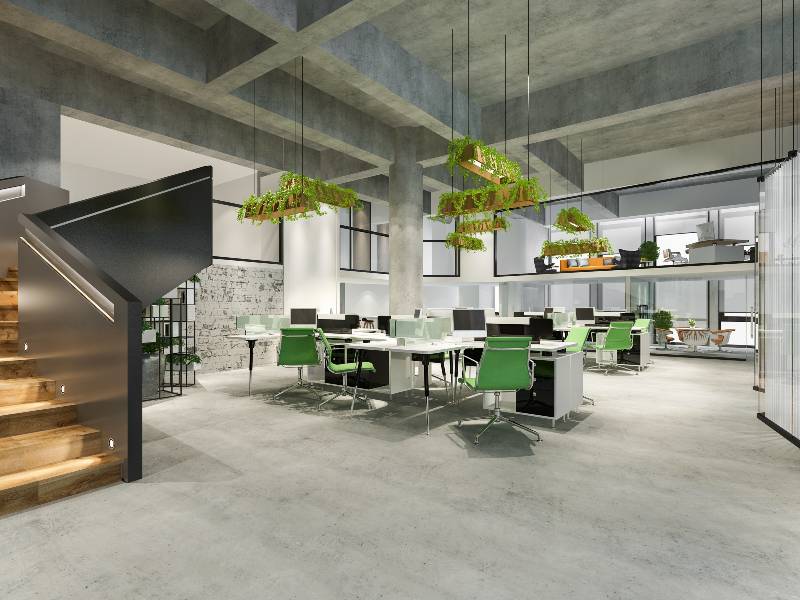
Historical Context
Over the past few decades, global climate trends have had a profound impact on various sectors, including commercial real estate. Rising global temperatures, extreme weather events, and increasing sea levels, largely attributed to human-induced climate change, have started to reshape the landscape of commercial real estate.
Historically, commercial real estate was primarily centered around strategic location, accessibility, and the promise of business growth in prosperous urban centers. However, the last few decades have seen increased awareness and understanding of environmental impacts, leading to a paradigm shift in how industry leaders approach commercial property investments.
Many factors from climate trends have affected commercial real estate. For instance, properties in coastal or low-lying areas face increased flooding risks due to rising sea levels. Likewise, properties in areas prone to wildfires or storms may see their desirability and value plummet due to these elevated risks. Conversely, areas with a relatively stable climate may see a surge in demand and property value.
The commercial real estate industry has started to respond proactively to these environmental concerns and is witnessing a fundamental shift toward sustainability and resilience. The sector has seen a rise in ‘green’ buildings designed with energy efficiency, water management, and lower carbon footprints in mind. These buildings often incorporate renewable energy sources, like solar or wind power, and use materials that are environmentally friendly during construction.
Check out this captivating article I wrote last February on “The Power of Green: Transforming Commercial Real Estate.” Dive into the world of sustainable practices and their impact on the industry.
Moreover, in many regions, more stringent environmental regulations and standards have been implemented. These include regulations around energy efficiency and emissions, pushing commercial property developers and owners towards more sustainable practices.
Another response has been climate risk assessments during the due diligence process of commercial real estate transactions. Increasingly, buyers and investors are factoring the potential impacts of climate change into their assessments of a property’s long-term value.
As the world becomes more aware and adaptive to the realities of climate change, the commercial real estate industry continues to evolve. The focus is on not just safeguarding but also enhancing property value and profitability in an environmentally responsible manner. This trend reflects the shifting priorities of investors, developers, and consumers toward a more sustainable and resilient future in commercial real estate.
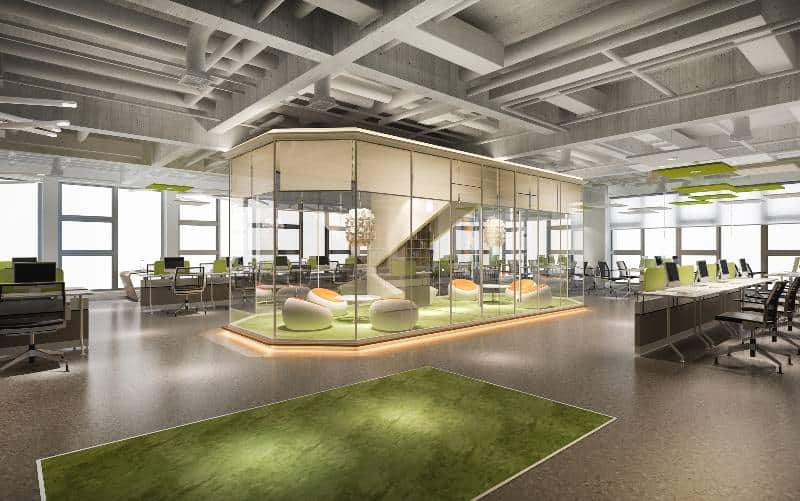
Impacts on Commercial Real Estate
Over time, climate change has exerted noticeable physical, economic, and regulatory impacts on commercial real estate, reshaping the way the industry operates and how investments are appraised.
Physical Impacts
- Rising Sea Levels: Properties in low-lying coastal areas are facing the brunt of rising sea levels, often leading to increased flooding. These areas have become riskier for investment, with some businesses relocating to avoid the consistent threat of water damage.
- Extreme Weather Events: Unpredictable and more frequent extreme weather events (hurricanes, extreme heat, wildfires, etc.) have posed severe risks to commercial properties. The cost of repairs and renovations post-disaster can be substantial, necessitating the need for better planning and resilience in building design.
Economic Implications
- Value Depreciation: With the physical threats posed by climate change, properties in risk-prone areas may experience significant value depreciation. Investors might hesitate to finance properties that bear a high chance of being disrupted by climate-related factors, leading to decreased demand and lower property values.
- Insurance Costs: As climatic changes increase the likelihood of extreme weather events, insurance companies are adjusting their risk assessments accordingly. This recalibration often results in higher insurance premiums for commercial properties, leading to higher operational costs for businesses.
Regulatory and Policy Changes
Policy and regulatory reforms are potent tools influencing business behavior towards a more sustainable pathway.
- Energy Regulations: Governments worldwide are framing stringent energy regulations mandating a cut in carbon emissions. This legislative push necessitates that commercial real estate developers comply with standards for energy-efficient buildings and renewable energy usage, and achieve minimal carbon footprints.
- Sustainability Incentives: Many jurisdictions provide incentives like tax credits or grants for properties that meet certain sustainability standards or use renewable energy sources, encouraging environmentally friendly practices in the commercial real estate sector.
Ultimately, these environmental changes and policy implications challenge the commercial real estate sector to rethink its strategies. The industry needs to focus on resilience, sustainability, and adaptability to shield itself from the physical and financial fallouts of climate change, catering to the evolving market needs.
Adaptive Strategies for Property Owners
In a world where climate change is no longer a distant threat but a present reality, property owners, especially those in the commercial realm, need to pivot and adapt. Let’s break down some of the essential strategies that can make a world of difference:
Infrastructure Upgrades for Resilience: Imagine walking up to a building, and instead of seeing the usual entrance, you’re greeted by sleek, modern flood barriers seamlessly integrated into the architecture. It’s not just for aesthetics; these barriers can be a game-changer during sudden floods or rising sea levels. But that’s just the tip of the iceberg (no pun intended!). By also incorporating energy-efficient systems, like solar panels on rooftops or smart windows that adjust tints based on sunlight, properties don’t just save on energy costs. They also significantly reduce their carbon footprint.
Think of it as a two-for-one deal: you’re both safeguarding your property and doing a bit for the Earth.
Diversifying Property Portfolio Based on Geographical Factors: Remember that old adage, “Don’t put all your eggs in one basket?” It’s never been truer.
With regions experiencing varying climate-related impacts, it might be wise for property investors to spread their commercial real estate investments. For instance, if you’ve always invested in coastal properties, it might be time to consider adding some mountain or inland city real estate to your portfolio. This way, even if one area faces climate challenges, your investments in other geographies could offer stability and growth. Think of it as a real-world game of Monopoly, where buying properties across the board can increase your chances of success!
Engaging in Sustainable Building Practices: Let’s paint a picture. Imagine walking into a building where the walls are adorned with living greenery, purifying the air naturally. The floors you walk on? Made of recycled materials, yet as chic as any designer decor. Sustainable building isn’t just about ticking boxes for the environment; it’s about creating spaces that feel good, look fantastic, and truly stand the test of time. Whether it’s sourcing local materials to reduce transportation emissions or designing spaces to maximize natural light and reduce electricity usage, these practices are both smart and soul-soothing. And trust us, tenants and buyers are taking notice!
Green buildings aren’t just a trend; they’re the future.
Opportunities Amidst Challenges
Change is never easy. But with every shift and shakeup, particularly the one climate change brings, there emerge pockets of opportunities waiting to be seized. For forward-thinking individuals and businesses, these evolving circumstances present a golden chance to innovate and lead. Let’s delve into these rays of hope:
Growing Demand for Green Buildings and Certifications
Picture this: A bustling urban scene where every other skyscraper proudly displays a “Green Certified” badge, surrounded by lush vertical gardens and rooftops equipped with solar panels shimmering under the sun. It isn’t a fragment of sci-fi fiction; it’s rapidly becoming our reality! As more consumers and businesses become eco-conscious, there’s a burgeoning demand for structures that resonate with these values.
Green buildings are not only energy-efficient and environmentally friendly, but they also offer better air quality and more pleasant living and working conditions. And as the cherry on top? They often come with financial incentives, from tax breaks to reduced utility bills. Getting that coveted certification could be your ticket to tapping into a rapidly growing market segment that values sustainability as much as style.
Technological Solutions: The Future is Now
If you’ve ever dreamt of living in a futuristic world, guess what? It’s already here! Smart buildings, equipped with advanced sensors, can automatically adjust heating or cooling based on the number of occupants or the time of day. Integrated AI systems can predict maintenance needs before they become major issues, saving both time and money.
Renewable energy solutions, from wind turbines to solar panels, are not only becoming more efficient but also more affordable.
Even better?
Battery storage technology is advancing, ensuring that the power harnessed from the sun on a bright day can light up commercial property during a cloudy one. These technological wonders aren’t just gadgets and gizmos; they’re practical tools making buildings more efficient, comfortable, and eco-friendly.
Investment Avenues in Resilient and Sustainable Properties
Here’s some food for thought: Why settle for short-term gains when the future is leaning towards sustainability?
Properties designed with resilience in mind – think flood barriers in coastal areas or fire-resistant materials in wildfire-prone regions – are gaining value and demand. Investing in such properties isn’t just a smart move for the planet; it’s a savvy one for your pocket too. These properties often attract premium prices, not to mention they stand a better chance against the ravages of time and nature. So, by focusing your investments on sustainable and resilient real estate, you’re essentially buying into a future-proof commercial real estate market.
Case Studies
The Resilient Rise of Rotterdam
- Background: Rotterdam, a bustling city in the Netherlands, is no stranger to the threats of rising sea levels, given much of it lies below sea level.
- Adaptive Measures: Instead of seeing this as a disadvantage, city planners took innovative steps. They designed water plazas that act as public spaces during dry times but double as water storage during heavy rains. Similarly, floating communities have been developed, turning the challenge of water into real estate assets.
- Outcome: Today, Rotterdam stands as an epitome of adaptive urban planning, attracting businesses and residents alike, and it’s often cited as a role model for other cities facing similar challenges.
- Key Takeaway: Embracing the problem and integrating it into the solution can lead to innovative, multi-functional urban designs that thrive despite the challenges.
The Green Transformation of Salesforce Tower, San Francisco
- Background: Salesforce Tower, already an iconic fixture of the San Francisco skyline, decided to elevate its stature by focusing on sustainability.
- Adaptive Measures: The tower boasts of a water recycling system that saves around 30,000 gallons of drinking water a day. Its design maximizes natural light, reducing the need for artificial lighting, while state-of-the-art HVAC systems ensure optimal energy usage.
- Outcome: The building not only drastically reduced its carbon footprint but also became a magnet for businesses that prioritize sustainability. The cost savings on utilities have been substantial, making it a win-win for both the environment and the pocketbook.
- Key Takeaway: Implementing sustainable technologies can provide both environmental and economic benefits, enhancing the appeal and profitability of commercial properties.
Miami’s Battle with Rising Tides
- Background: Miami, with its picturesque beaches and high-value coastal properties, faced significant threats from rising sea levels and increasingly frequent floods.
- Challenge Encountered: Many properties started experiencing “sunny day floods,” leading to property damage, reduced foot traffic for businesses, and plummeting property values. Insurances skyrocketed, and many investors grew wary.
- Response: The city invested heavily in sea walls, raised streets, and updated drainage systems. Additionally, property owners began elevating structures and integrating green infrastructure, such as permeable pavements and rain gardens.
- Outcome: While challenges persist, these adaptations have mitigated some of the immediate threats and helped stabilize the real estate market to a degree.
- Key Takeaway: Proactive measures, both at the city and individual property level, are crucial for regions facing imminent threats. Delayed responses can lead to escalated costs and loss of property value.
In studying these cases, it’s evident that adaptation and forward-thinking are vital. Whether harnessing nature, investing in green tech, or reimagining urban design, success in commercial real estate in the era of climate change depends on proactive planning, innovation, and the courage to reimagine possibilities.
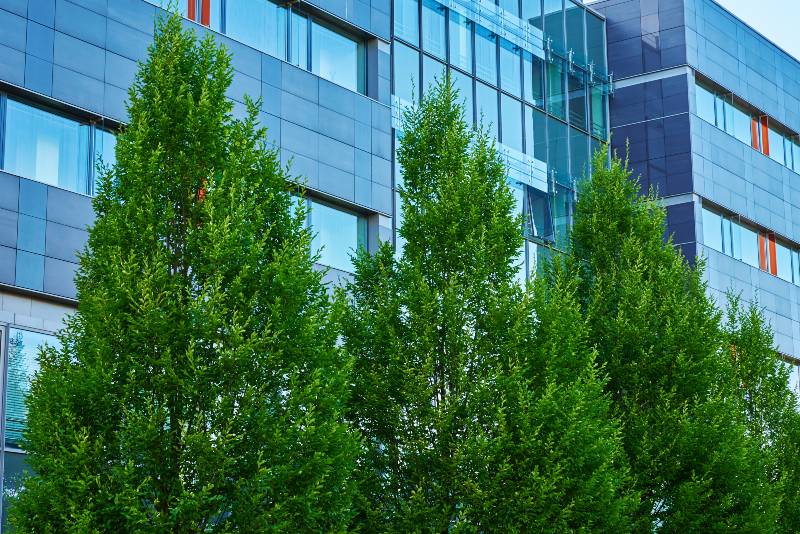
Climate Change on Commercial Real Estate FAQs
What are green buildings, and why are they becoming popular?
Green buildings are structures that have been designed, built, and operated with sustainability in mind. This includes various aspects such as energy efficiency, water conservation, use of renewable materials, and waste management. Green buildings are becoming increasingly popular as they can reduce both operating costs and carbon footprints while also improving occupant health and comfort.
How can property owners make their existing buildings more resilient?
Property owners can make their existing buildings more resilient by taking various proactive measures such as implementing water-resistant building materials, investing in floodproofing systems, and introducing green infrastructure like rain gardens. Additionally, they should maintain regular inspections of the property to identify potential problem areas before they become major issues.
How does sustainable building impact return on investment?
Sustainable buildings are not only more energy-efficient and comfortable but also tend to attract higher rental prices. As such, they can provide a better return on investment compared to non-sustainable structures. Additionally, businesses that prioritize sustainability often prefer sustainable properties, so it pays for property owners to invest in green initiatives.
Are there technological solutions that can help adapt properties to the changing climate?
Yes, there are several technological solutions that property owners can leverage to stay ahead of the changing climate. These include sensors and monitoring systems that streamline water management, HVAC systems with energy-saving features, and predictive analytics that help predict floods and other natural disasters with greater accuracy.
Can climate change present investment opportunities in the real estate sector?
Yes, climate change can present investment opportunities in the real estate sector. Developing strategies that take into account the effects of rising temperatures and changing weather patterns can open up new markets or create a competitive edge for savvy investors. For instance, investing in properties located in high-risk areas may become more profitable when equipped with water-resistant materials and green infrastructure.
Conclusion
Climate change presents a challenge to commercial real estate but also creates opportunities for innovation and investments in sustainable buildings. Property owners must stay informed of environmental regulations that will directly impact the values and usage of their property. Despite the challenges, with a renewed focus on resilience, sustainability, and green building techniques – we can mitigate climate-related risks to commercially owned properties.
If you want to explore more options on how to ensure your investment or protect yourself from the impacts of climate change while increasing your asset value – call or schedule a free consultation with me, a real estate professional dedicated to helping you tackle these ultimate challenges! Let’s work together to make our commercial spaces more resilient and ensure that they retain their value for years to come.



